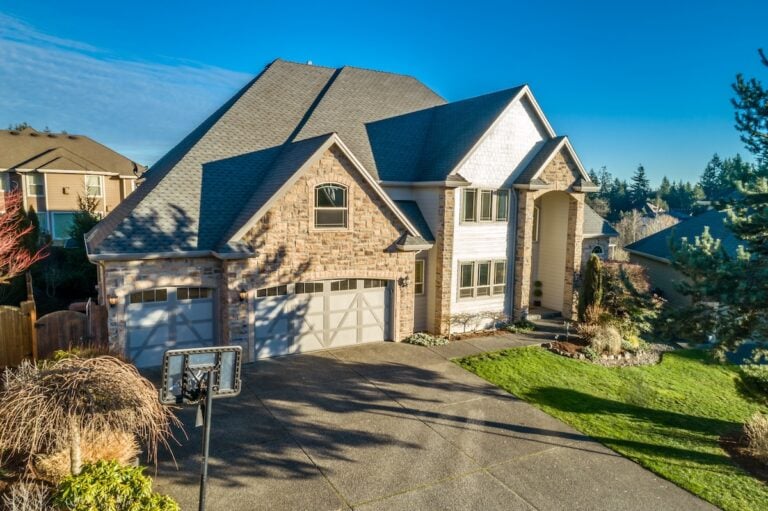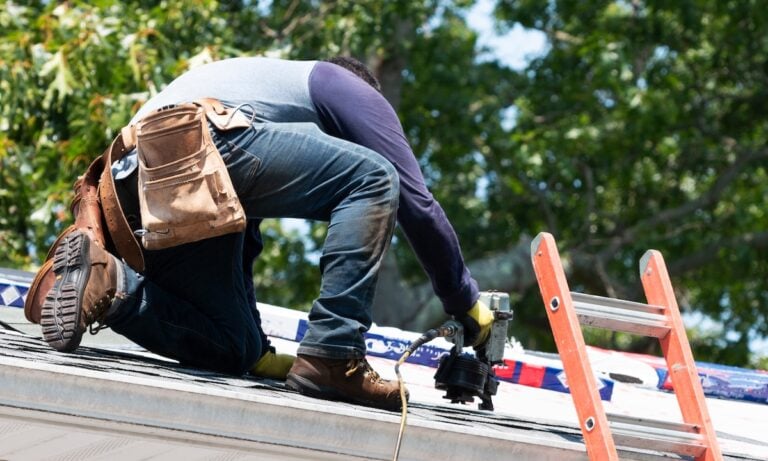Roof eaves are a critical and often overlooked part of your home’s overall functionality and curb appeal. They serve several essential purposes, including protecting your home’s exterior walls, improving attic ventilation, and contributing to its architectural style. Whether you’re building a new home, tackling a roofing project, or simply curious about this fundamental part of your roof structure, understanding roof eaves can save you time, money, and unnecessary stress.
Key points we’ll cover in this guide:
- The purpose and components of roof eaves
- How to install and maintain them
- Common problems and solutions to protect your home
Keep reading to learn everything you need to know about roof eaves, from their functionality to how to ensure they remain in top condition.
What Are Roof Eaves?
Roof eaves are the exterior edges of the roof that extend beyond the exterior walls of your home. This overhanging structure isn’t just an aesthetic feature; it serves a functional role in protecting your home from water damage, managing airflow, and increasing its overall lifespan.

Components of Roof Eaves
Roof eaves consist of the following parts:
- Soffit – The underside of the overhang, often ventilated to help regulate attic ventilation and prevent moisture buildup.
- Fascia – A horizontal board that caps the edge of the eave, providing a clean finish and a mounting area for gutters.
- Gutters – Attached to the fascia to direct water away from your home and prevent erosion or damage to your foundation.
Each of these parts plays a specific role in ensuring the roof overhang functions effectively. Together, they create a barrier against outdoor elements and contribute to the overall roof structure’s stability.
Why Are Roof Eaves Important?
Investing in quality roof eaves benefits your home in several ways:
- 💧 Water Protection: Roof eaves direct rainwater away from your home’s exterior walls and foundation, reducing the risk of water damage or mold growth.
- 💨 Ventilation: Properly designed eaves with soffit vents promote attic ventilation, which reduces heat buildup, prevents moisture accumulation, and extends the life of your roof.
- ✨ Aesthetic Appeal: The right roof eave style can enhance your home’s curb appeal and architectural character.
Types of Roof Eaves
Roof eaves vary based on design and functionality. Understanding the different types can help you choose the best fit for your home.
- Exposed Eaves: Exposed eaves leave the rafter tails visible, giving your home a rustic or traditional look. They’re common in craftsman and farmhouse-style homes.
- Closed Eaves: Closed eaves have a soffit that hides the rafters, creating a sleek and polished appearance. They’re widely used in modern and contemporary architecture.
- Boxed-In Eaves: Boxed-in eaves are similar to closed eaves but include a vertical soffit panel, which completely encloses the space beneath the overhang. This style offers maximum protection for the roof structure.
- Overhanging Eaves: Overhanging eaves, which extend several feet beyond the walls, provide extra shade and protection. They’re particularly popular in areas with heavy rain or hot climates.

How to Install Roof Eaves
Proper installation is crucial to ensure your roof eaves perform effectively. Here’s a step-by-step breakdown:
Preparing to Install Roof Eaves
- Measure the overhang to determine the size of the eaves.
- Gather materials, including fascia boards, soffit panels, nails, and tools.
- Plan any necessary ventilation openings within the soffit.
Installation Process
- Install the soffit: Begin by attaching soffit panels beneath the overhang.
- Secure the fascia: Nail fascia boards to the edge of the eaves, ensuring a tight fit.
- Attach the gutters: If applicable, mount the gutters to the fascia boards to manage water flow.
- Seal and finish: Apply sealant and paint for durability and curb appeal.
While some homeowners may tackle this as a DIY project, hiring a professional ensures proper installation that complies with local building codes.
Maintaining Your Roof Eaves
Regular maintenance is key to prolonging the life of your roof eaves and preventing costly repairs.
🍂 Seasonal Inspections
Inspect your roof structure at least twice a year (spring and fall) for signs of damage, such as peeling paint, cracked fascia, or clogged gutters. Pay attention to the soffit as well, looking for pests or blocked ventilation.
🧼 Cleaning Tips
- Remove debris like leaves and dirt from the soffit, fascia, and gutters.
- Use a long brush or a garden hose for hard-to-reach areas.
- Repaint or reseal the eave components every few years to maintain their appearance and resilience.
🛠️ Addressing Minor Repairs
If you notice any loose or damaged parts, repair them promptly:
- Fix small cracks in the soffit or fascia with caulk or a patch kit.
- Replace warped or rotted boards as needed.
- Clear clogged gutters to ensure proper drainage.
Preventative care goes a long way toward protecting your home from water damage and improving its curb appeal.
Common Problems with Roof Eaves (And How to Fix Them)
Even with proper care, roof eaves are still vulnerable to certain issues. Below, we explore common problems and how to address them effectively.
Water Damage: When gutters clog or fascia boards rot, water can seep into your roof structure or foundation.
- Solution: Regularly clean your gutters and replace damaged fascia with treated wood or weather-resistant materials.
Pest Infestation: Animals like birds, squirrels, and insects often find their way into poorly sealed eave spaces.
- Solution: Seal any gaps and consider using pest deterrents or screens for extra protection.
Poor Ventilation: Blocked or insufficient soffit vents can lead to moisture buildup and increased attic temperatures.
- Solution: Clean and maintain soffit vents to promote attic ventilation, and consider adding more vents if required.
Structural Weakness: Over time, wear and tear can compromise the integrity of your eaves.
- Solution: Schedule regular inspections with a professional roofer to identify and repair weak or sagging components.
How to Replace Roof Eaves
Replacing roof eaves can be a manageable process with the right tools and knowledge. Follow these steps to ensure a successful replacement:

- Assess the Damage: Begin by inspecting the eaves for visible signs of rot, cracks, or structural issues. Determine the extent of the damage to decide whether full or partial replacement is needed.
- Gather Materials and Tools: Prepare the necessary materials, such as new wood, nails, screws, and paint or sealant. You’ll also need tools like a saw, hammer, screwdriver, and ladder.
- Remove the Damaged Components: Carefully detach the damaged portions of the eaves, including boards or soffits, using appropriate tools. Be cautious to avoid damaging surrounding structures like the roof or gutters.
- Install the New Eaves: Cut the replacement materials to the correct dimensions and securely attach them in place. Align the new components properly and fasten them using nails or screws.
- Seal and Paint: Apply a weather-resistant sealant to protect against moisture, and paint the new eaves to match the rest of the roof. This will improve durability and aesthetics.
- Inspect and Clean Up: After installation, inspect the work to ensure everything is properly secured and aligned. Clean up any debris or leftover materials from the worksite.
For complex repairs, it’s advisable to consult a professional roofer to ensure safety and proper installation.
5 Essential Tips to Extend the Life of Your Roof Eaves
Here’s a simple, actionable guide to help you care for your roof eaves and extend their lifespan:
- Inspect Regularly: Set reminders to inspect your roof eaves every six months and after major storms.
- Keep Gutters Clean: Remove leaves and debris from your gutters to prevent water overflow and damage to the fascia.
- Repaint as Needed: Apply a fresh coat of weatherproof paint every few years to protect against moisture and UV damage.
- Address Damage Promptly: Fix small issues, like loose nails or cracked boards, before they lead to more significant problems.
- Hire a Professional: Work with an experienced roofer to ensure your eaves remain in peak condition while enhancing your home’s curb appeal.
Why Trust Boss Exteriors for Your Roofing Needs?
Understanding and maintaining your roof eaves is essential for preserving your home’s integrity and appearance. At Boss Exteriors, we specialize in roofing solutions that protect your home while elevating its curb appeal.
Whether you need help with minor repairs or a complete roof replacement, you can trust us to get the job done right. Contact us today and discover the Boss Exteriors difference. Together, we’ll ensure your home is as beautiful and protected as it deserves to be.




